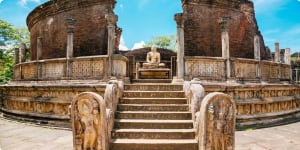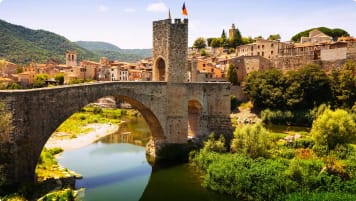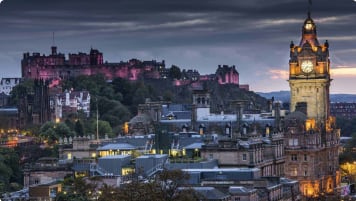Sri Lanka | Culture and History Small Group Tour
A small group tour of Sri Lanka for mature couples and solo travellers is a great introduction to the trading history of the world and "Spice" The centre of the island offers rolling hills, year round cool climate and former British colonial hill stations complete with Tudor hotels, rose gardens and the oldest golf course in Asia. Scattered around the country are National Parks filled with game. The world’s first game reserves were founded in Sri Lanka over 2,000 years ago.
From A$8,250AUD
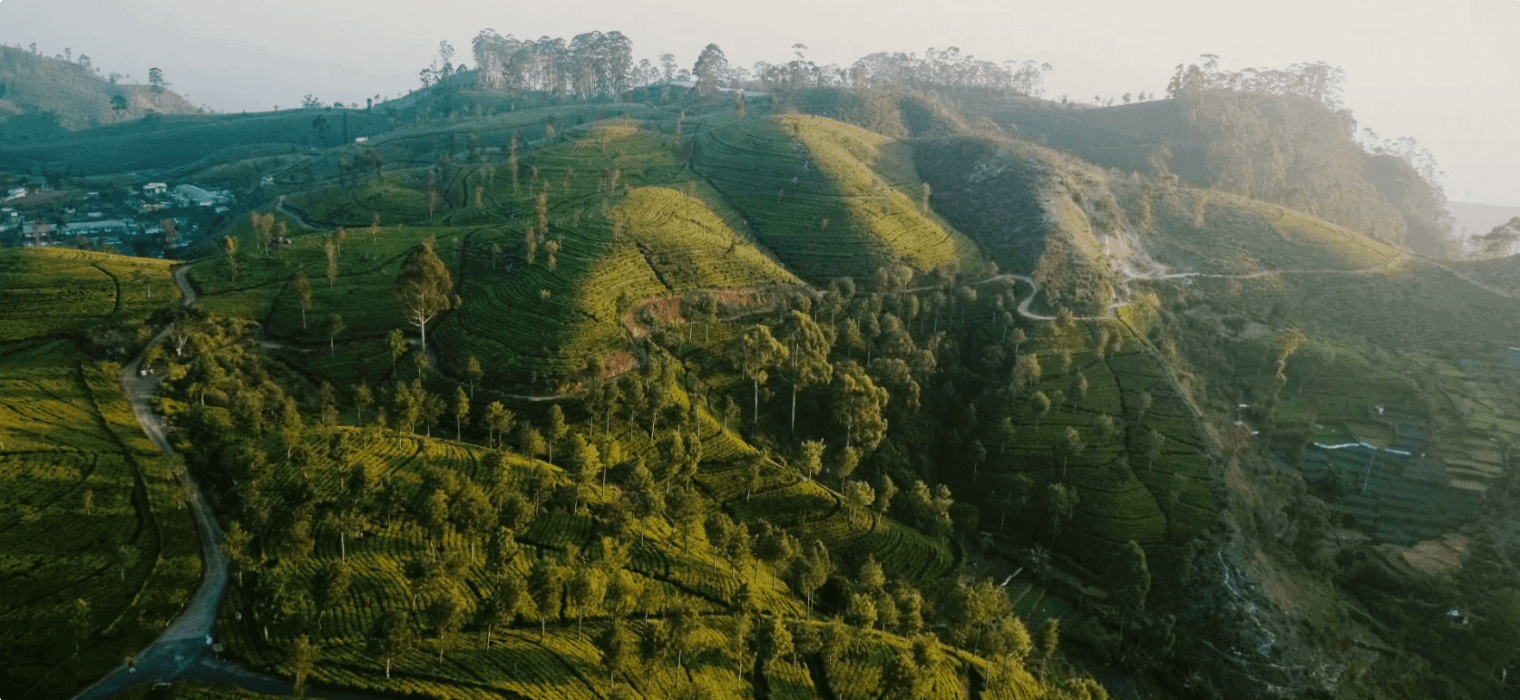
Highlights
- 1. Visit 4 World Heritage sites: Anuradhapura, Sigiriya, Kandy, and The Dutch Fort in Galle.
- 2. Tour Kandy including the Botanical Gardens and the Temple of the Tooth relic.
- 3. Visit a spice garden, fish market, batik factory, and tea plantation.
- 4. Explore Yala National Park to discover its elephants, leopards, spotted deer, sambhur, crocodiles, mongooses, and wild boars.
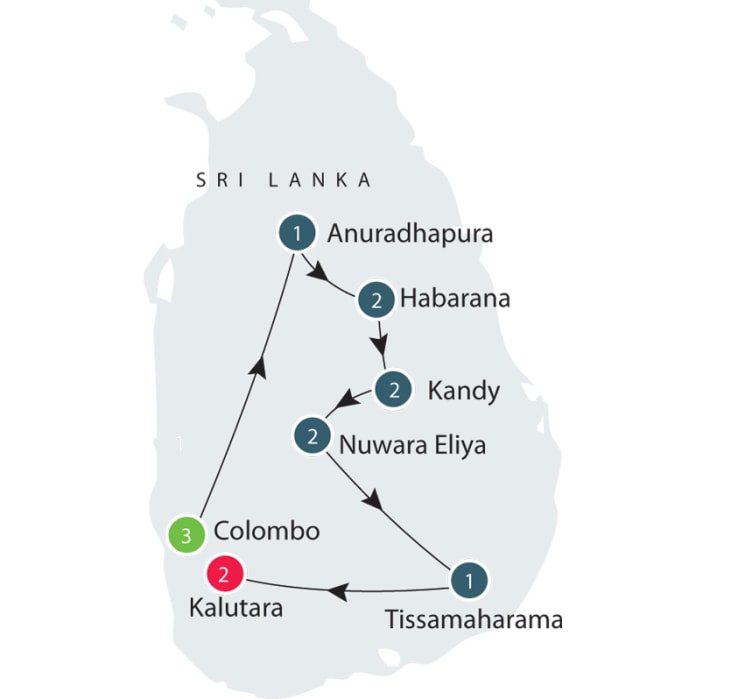
Departure Dates
| Departure Date | Price |
|---|---|
| 13 March 2025 Ends 27 March 2025 • 15 days A$8,250 Twin A$10,150 Single Available | Selected |
| 12 March 2026 Ends 26 March 2026 • 15 days A$8,250 Twin A$10,150 Single Available |
Sri Lanka | Small Group Tour
Odyssey offers easy, convenient, and relaxed escorted small group tours across Asia include the charming Sri Lanka. We explore Sri Lanka's fairy-tale natural beauty, its ancient heritage, and the Portugese, Dutch and British history, its World Heritage Sites, and world famous places all with some truly spectacular scenery along the way. This and more is all waiting to be explored on one of Odyssey’s small group tours of Sri Lanka, designed for the senior traveller, and led by experienced, and enthusiastic like minded people.
Odyssey Traveller's Sri Lanka small group tour for mature and senior travellers whether travelling as a couple or as a solo traveler, explores the culture, history, and landscape of Sri Lanka. Our 14-day small group escorted journey to one of the original spice islands takes in many of the country's attractions, travelling from the mild Indian Ocean coastline to the cooler ranges of the tea country. On this tour, we also explore both ancient temples and English garden landscapes, meeting some of the most charming people to be found along the way.
The centre of the island offers rolling hills, year-round cool climate, and former British colonial hill stations. These stations are complete with Tudor hotels, rose gardens, and the oldest golf course in Asia. Sri Lanka also has many national parks filled with game. The Sri Lankan people set aside land for the world's first game reserves more than 2,000 years ago.
Colombo Sri Lanka: Destination Itinerary
Our cultural and history tour begins in the capital city, Colombo, where we enjoy a walking tour of the city and learn about its development and history. Like many capital cities in developing countries, Colombo is rapidly changing its face. Almost overnight, skyscrapers have emerged from where old buildings once stood. Yet in many parts, the city has retained its old world charm. For example, Colombo residents have kept a 100-year-old clock tower and several British-built colonial buildings in the centre of the city. While in Colombo, we explore the Pettah bazaar, Hindu and Buddhist temples, along with residential areas containing the stately homes of the affluent. In addition, we visit the Bandaranaike Memorial International Conference Hall (BMICH), a gift to Sri Lanka from the People's Republic of China.
Negombo, Tissam, and Kalutara
Our trip then heads to Negombo. The town has several buildings dating back to the Dutch and Portuguese colonial days, including the Dutch Fort and a historic Catholic church. Negombo is also home to several stunning beaches, which play host to regular fish auctions.
Our tours of Sri Lanka also take in Anuradhapura, the first capital and the grandest of Sri Lanka's ancient cities, home to the ruins of a Buddhist Monastery and the tree where the Buddha is said to have gained enlightenment. We also travel to Nuwara Eliya, a hill resort in the centre of Sri Lanka's tea plantations. Our guided tours also take in spectacular scenery with a visit to Yala National Park, home to an array of wild animals - and access to the pristine beaches of Sri Lanka's east coast.
Highlights of our small group tours Sri Lanka
Highlights of this small group tour include visiting the Pinnawela Elephant Orphanage during feeding time, where we see how locals are preserving this precious species. We also experience four World Heritage sites: Anuradhapura, Sigiriya, Kandy, and The Dutch Fort in Galle. In addition, we also spend time exploring Yala National Park. Here, we come face to face with elephants, leopards, spotted deer, sambhur, crocodiles, mongooses, and wild boars. Our local guide provides unique insight into the history and culture of Sri Lanka, covering both the island's ancient history and the impacts of Portugese, Dutch, and British colonisation.
For more details, click the ‘Top 5’ or ‘Itinerary’ buttons above! If you’re keen to experience this tour, please call or send an email. Or, to book, simply fill in the form on the right hand side of this page.
Odyssey Traveller Australia offers a diverse collection of small group tours for you to discover. While we only have the one tour of Sri Lanka, travellers interested in visiting South Asia might also be interested in our tours of India.
Gallery
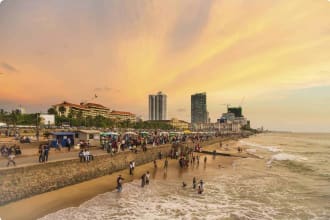
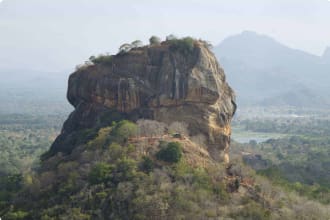
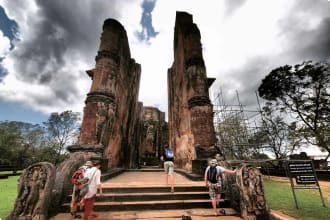
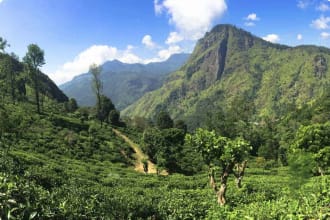
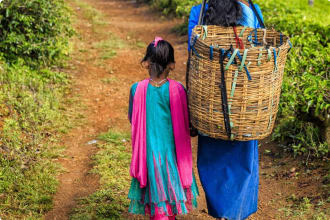
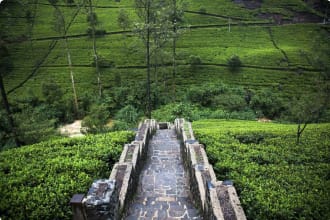
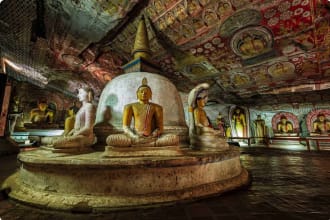
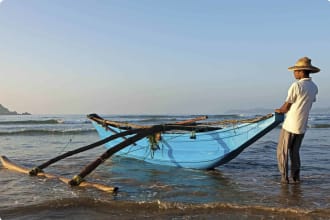
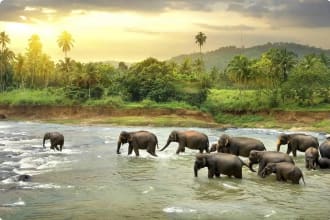
Itinerary
15 days
Day 1: Airport Colombo
Accommodation: 3 nights at Galle Face Hotel Colombo or similar.
Upon arrival in Colombo, we come individually to our overnight hotel in Colombo if not using flights suggested by Odyssey Travel.
Day 2: Colombo
Accommodation: Galle Face Hotel or similar.
After breakfast we proceed to Colombo.
Like many capital cities in developing countries, Colombo is fast changing its face. Almost overnight, skyscrapers arise from where old buildings once stood. Yet in some parts, the old world charm is retained. For example, there is a 100-year-old clock tower and several British-built colonial buildings.
Day 3: Colombo
Accommodation: Galle Face Hotel or similar.
Colombo’s places of interest include the Pettah bazaar where one can shop for bargain, a Hindu and a Buddhist temple, residential areas where you find stately homes of the affluent, and the Bandaranaike Memorial International Conference Hall (BMICH), an outright gift to Sri Lanka from the People’s Republic of China.
Day 4: Colombo - Negombo - Anuradhapura
Accommodation: 1 night at Heritage Hotel or similar.
We transfer from Colombo to Negombo. The Negombo town has several buildings dating back to the Dutch and Portuguese colonial days. The sea and catamarans are the backdrop of the Negombo scenery. The lagoon is famous for its harvest of lobsters, crabs and prawns and the fish auctions on the beach are worth a look. We also visit the Dutch Fort and a Catholic Church. We transfer from Negombo to Anuradhapura and enjoy lunch at Club Palm Bay.
Day 5: Anuradhapura - Habarana
Accommodation: 2 nights at Cinnamon Lodge or similar.
Anuradhapura was the first capital and undoubtedly the grandest city of the ancient Ceylon. It is the home of 2 world heritage sites. Many places of historical and archaeological interest can be visited. Sri Maha Bodhi (Sacred Bo-Tree) was brought as a sapling of the tree under which Prince Siddhartha attained to enlightenment and it is over 2,200 years old, making it the oldest historically documented tree in the world.
We will visit the Brazen Palace (2nd century BC). The 1,600 stone columns are all that is left of a magnificent multi-storied residence for monks. Ruwanweliseya (2nd century BC) is the most famous of all the dagobas. It originally depicted the perfect “bubble shape” that modern restoration has not been able to accurately reproduce. “Samadhi” Buddha statue (4th century AD) is one of the most famous statues, depicting the Buddha in a state of “Samadhi” or deep meditation. Isurumuniya rock temple (3rd century BC) is well known for its rock carvings. We transfer from Anuradhapura to Habarana.
Day 6: Habarana - Sigiriya - Polonnaruwa - Habarana
Accommodation: Cinnamon Lodge or similar.
We have breakfast at Cinnamon Lodge, then transfer from Habarana to Sigiriya. We climb the 5th-century Sigiriya rock fortress, which is a world heritage site built by King Kashyapa (477-495 AD). The “Lion Rock” is a citadel of unusual beauty rising 200 metres from the scrub jungle. The rock was the innermost stronghold of the 70-hectare fortified town. A moat, rampart, and extensive gardens including the renowned water gardens ring the base of the rock. We visit the world-renowned frescoes of the “Heavenly Maidens” of Sigiriya, which are in a sheltered pocket of the rock approached by a spiral stairway. These frescoes are painted in earth pigments on plaster.
We transfer from Sigiriya to Polonnaruwa and enjoy lunch at Sigiriya Rest House. The island’s medieval capital (built in the 11th and 12th century AD) rose to fame after the decline of Anuradhapura and it is a world heritage site. Many of the ruins are in excellent condition. Its great artificial lake, the Parakrama Samudra, covers an area of 6,000 acres, feeding a network of irrigation canals and minor tanks. We visit the ruins of the Royal Palace, the Gal Viharaya which has 4 splendid statues of the Buddha in “Upright,” “Sedentary,” and “Recumbent” postures carved out of rock, the Audience Hall, the Lotus Bath, and the statue of King Parakramabahu. There are also monuments of famous places of worship such as the Shiva Temple, the Lankathilake, the Watadage, the Galpotha, the Kiri Vehera, and the remains of a former Temple of the Tooth Relic. We transfer from Polonnaruwa to Habarana.
Day 7: Habarana - Dambulla - Matale - Kandy
Accommodation: 2 nights at Mahaweli Reach or similar.
We transfer from Habarana to Dambulla. The Dambulla rock temple was built by King Walagambahu in the 1st century BC and it is a World Heritage Site. It is the most impressive of Sri Lanka’s cave temples. The complex of 5 caves with over 2,000 square metres of painted walls and ceilings is the largest area of paintings found in the world. It contains over 150 images of the Buddha of which the largest is the colossal figure of the Buddha carved out of rock spanning 14 metres. We transfer from Dambulla to Matale and visit a spice garden in Matale to see different spices for which Sri Lanka is famous for. We will be introduced to different spices and shown how some of these spices are grown and processed. We also witness a cookery demonstration and enjoy lunch at Ranweli Spice Garden.
We will transfer from Matale to Kandy.
Day 8: Kandy - Pinnawala - Peradeniya - Kandy
Accommodation: Mahaweli Reach or similar.
After breakfast at our hotel, we transfer from Kandy to Pinnawala. The Pinnawala Elephant Orphanage provides visitors with the best chance of seeing a large number of elephants at close quarters. The orphanage was established in 1975 and commenced with 7 orphaned elephants. Today some of these orphans enjoy the fortune of seeing their grandchildren born in the same location. Assisted by local and foreign elephant experts, Pinnawala commenced a successful captive breeding tour and the first baby elephant was born in 1984. It is most interesting to visit at feeding time to see the baby elephants being bottle fed and the entire herd taken for a bath afterward to the river nearby.
We will enjoy lunch at Pinnalanda Restaurant, then transfer from Pinnawala to Peradeniya. This beautiful garden is located 4 miles off Kandy. It was first built as a pleasure garden by a Sinhala king and was expanded by the British. It covers approximately 147 acres and is a walkers paradise with extensive well-kept lawns, pavilions, an octagon conservatory, fernery, a giant Javan fig tree, and numerous flower beds. The best attraction is the orchid house. We transfer from Peradeniya to Kandy.
Day 9: Kandy - Nuwara Eliya
Accommodation: 2 nights at Grand Hotel or similar.
After breakfast at our hotel, we transfer from Kandy to Nuwara Eliya. Upon arrival we will have lunch at Ramboda Falls Hotel. Because of its invigorating mountain climate and scenery, Nuwara Eliyais is Sri Lanka’s most popular hill resort. Nuwara Eliya is also the heart of Sri Lanka’s tea country, producing a significant share of the world’s best tea. Sri Lanka’s highest mountain Pidurutalagala (8282 feet) is located here. Nuwara Eliya also has one of the finest 18-hole golf courses in South Asia.
Day 10: Nuwara Eliya - Horton Plains - Nuwara Eliya
Accommodation: Grand Hotel or similar.
We enjoy breakfast at our hotel, then transfer from Nuwara Eliya to Horton Plains. Horton Plains is located on a high windswept saddle at about 2,300 metres (7,500 ft) above the sea level. The plains are an expanse of misty grassland with scraggy trees and ice-cold rivulets. The unique feature of Horton Plains is “World’s End.” It is considered to be the finest view in all of Sri Lanka. The awesome escarpment drops vertically for about 4,000 feet, hence its name. We can also see the beautiful Bakers falls. (Walk is about 14 km). The park shelters mammals such as samburs, leopards, bears, monkeys, and endemic lizards. This area is also home for over 20 endemic bird species including the Sri Lankan whistling thrush, orange-billed babbler, and yellow-eared bulbul.
We will enjoy lunch at the Grand Hotel and transfer from Horton Plains to Nuwara Eliya.
Day 11: Nuwara Eliya - Ella - Tissamaharama - Yala - Tissamaharama
Accommodation: 1 night at Elephant Reach or similar.
After breakfast at our hotel, we will transfer from Nuwara Eliya to Ella and enjoy lunch at Grand Ella Motel. We will travel to Yala and visit the Yala National Park which is approximately 1,259 square kilometres, making it the largest national park in Sri Lanka. It is located in the southeastern corner of the island and it has the added bonus of a scenic ocean frontage. The park is home to wild elephants, wild boars, wild buffaloes, leopards, bears, deer, and crocodiles. Large flocks of migratory and indigenous birds are also found here. We will transfer from Yala to Tissamaharama.
Day 12: Tissamaharama - Kataragama - Galle - Kalutara
Accommodation: 2 nights at Avani Kalutara Resort or similar.
We will enjoy breakfast at Elephant Reach, then travel to Galle, which was once the chief port of Ceylon and is a town rich in history. It was the center of the Dutch regime in the 17th century and the majestic Galle Fort (spanning 90 acres) bears testimony to this fact. The city of Galle is one of many well-preserved colonial-era cities in Southeast Asia and has been declared a “World Heritage Site.” The Dutch museum and the Dutch church are 2 famous tourist attractions in Galle. The city is also known for its delicate handmade lace and ebony carvings.
We will transfer from Galle to Kalutara and enjoy lunch at Closenberg Hotel.
Day 13: Kalutara
Accommodation: Avani Kalutara Resort or similar.
A vehicle will be at our disposal today for local sightseeing.
Day 14: Kalutara - Airport
We will enjoy breakfast at the hotel and some free time before ourtransfer from Kalutara to Colombo Airport if taking flights suggested by Odyssey Travel.
Tour Notes
- The climb to the top of Mt. Sigiriya is very demanding with hundreds of steep stairs and only for the physically fit.
- A visa is required to enter Sri Lanka and it can be obtained electronically prior to travelling.
- Group size limited to 18.
Includes / Excludes
What’s included in our Tour
- 13 nights of hotel accommodation.
- 13 breakfasts, 12 lunches, and 12 dinners.
- Comprehensive sightseeing with an English speaking guide.
- Odyssey Tour Leader for the duration of the tour.
- All sightseeing including entrance fees.
- Transport in comfortable and modern coaches.
- Detailed tour information booklet.
What’s not included in our Tour
- Comprehensive travel insurance.
- Visa fees
- Excess baggage charges and items of a personal nature.
- International airfares and departure taxes.
Participants must be able to carry their own luggage, climb and descend stairs, be in good health, mobile and able to participate in 3-5 hours of physical activity per day, the equivalent of walking / hiking up to 8 kilometers per day on uneven ground.
Book now
Make it a private tour
Easing your journey
Crossing international borders with restrictions
The list of requirements to travel internationally has changed and will continue to change for several years. Odyssey is here to assist you in managing your way through these requirements:
For more information see our Crossing international borders with restrictions page.
Book With Confidence
If less than 30 days before your tour starts you are unable to travel as a result of Government travel restrictions, Odyssey Traveller will assist you with a date change, provide you with a credit or process a refund for your booking less any non-recoverable costs.
See Terms and conditions for details.
Peace of Mind Travel
The safety of our travellers, tour leader, local guide and support staff has always been our top priority and with the new guidelines for public health and safety for keeping safe for destinations around the world, we’ve developed our plan to give you peace of mind when travelling with us.
See Peace of Mind Travel for details.
Reading List Download PDF
Sri Lanka: The Struggle for Peace in the Aftermath of War
Amarnath Amarasingam (Editor), Daniel Bass (Editor)
Even though Sri Lanka's protracted civil war came to a bloody conclusion in May 2009, prospects for a sustainable peace remain uncertain. The Sri Lankan army is no longer waging military campaigns and the separatist Liberation Tigers of Tamil Eelam (LTTE) are no longer carrying out political assassinations and suicide attacks, yet structural violence continues, and has arguably intensified since the war's end. Anti-Tamil discrimination, anti-Muslim violence, and Sinhala Buddhist majoritarianism all increased in the war's aftermath, as President Mahinda Rajapakse's government invoked its military victory over the LTTE to silence any opposition. The election of Maithripala Sirisena as president in January 2015 began to alleviate some of the worst of these post-war abuses of power, but many long-term problems will take longer to solve.
This book brings together scholars in the fields of anthropology, sociology, history, law, religious studies and diaspora studies to critically engage issues such as post-war development, constitutional reform, ethnic and religious identity, transnational activism, and transitional justice. Through an interdisciplinary approach to post-war Sri Lanka, this volume examines the intractable and complex issues that continue to plague this war-torn island.
Sri Lanka in the Modern Age: A History
Nira Wickramasinghe
Sri Lanka in the Modern Age recounts the modern history of the island in an accessible yet unconventional manner. Where other histories have tended to focus on the state's failure to accommodate the needs and demands of minority communities, Wickramasinghe places their claims alongside the political, social and economic demands of other communities, parties, associations and groups, tracing their lineages to the colonial period. This updated second edition carries the book into the present, covering the brutal end of Sri Lanka's civil war and the making of oppressive stability that has grown in its wake.
Drawing on recent work as well as on her own research in the field, Wickramasinghe has written above all a history of the people of Sri Lanka rather than a history of the nation-state.
The Elephant Gates: Vibrant Reflections of Life, Family, and Tradition in Sri Lanka
Chamalee Weeratunge
The Elephant Gates is a recollection of the simple pleasures of childhood caught up in an inevitable tide of change. With vivid and touching detail, it recalls Weeratunge’s life, home, and family in her native village of Depanama on the island of Sri Lanka.
Weeratunge’s memories reveal a yearning for past times when traditions like celebrating the New Year or a Full Moon Day, still endured. Her poignant reminiscences evoke compassion for a misunderstood vagrant and a captive elephant, and curiosity for the appearance of the Pot-Bellied Merchant and Uncle Robert the Capitalist. She celebrates everyday heroes like the Coconut-Plucker, the Cook of Sweet Meats, and the Buffalo-Herdsman. With delicate diplomacy, cultural change is signaled by events such as the abandoning of the firewood hearth and the arrival of the television.
These intricately woven stories are told with an engaging voice and graceful prose. Time, as it often does, has softened the edges and imparted a gentle humor in each vignette, whether in describing a rice harvest or sharing a game of checkers on the veranda. Ultimately, The Elephant Gates reaffirms our innate affinity for home, family, and the need to belong.
The Cage: The Fight for Sri Lanka and the Last Days of the Tamil Tigers
Gordon Weiss
In the closing days of the thirty-year Sri Lankan civil war, tens of thousands of civilians were killed, according to UN estimates, as government forces hemmed in the last remaining Tamil Tiger rebels on a tiny sand spit, dubbed “The Cage.” Gordon Weiss, a journalist and UN spokesperson in Sri Lanka during the final years of the war, pulls back the curtain of government misinformation to tell the full story for the first time. Tracing the role of foreign influence as it converged with a history of radical Buddhism and ethnic conflict, The Cage is a harrowing portrait of an island paradise torn apart by war and the root causes and catastrophic consequences of a revolutionary uprising caught in the crossfire of international power jockeying.
Gordon Weiss has lived in New York and worked in numerous conflict and natural disaster zones including Bosnia, Afghanistan, Darfur, Pakistan, Congo, and Haiti. Employed by the United Nations for over twelve years, Weiss is now a writer, speaker and analyst of international affairs as well as a founding advisor to the International Crimes Evidence Project, currently investigating war crimes.
The Seasons of Trouble: Life Amid the Ruins of Sri Lanka's Civil War
Rohini Mohan
For three decades, Sri Lanka’s civil war tore communities apart. In 2009, the Sri Lankan army finally defeated the separatist Tamil Tigers guerrillas in a fierce battle that swept up about 300,000 civilians and killed more than 40,000. More than a million had been displaced by the conflict, and the resilient among them still dared to hope. But the next five years changed everything.
Rohini Mohan’s searing account of three lives caught up in the devastation looks beyond the heroism of wartime survival to reveal the creeping violence of the everyday. When city-bred Sarva is dragged off the streets by state forces, his middle-aged mother, Indra, searches for him through the labyrinthine Sri Lankan bureaucracy. Meanwhile, Mugil, a former child soldier, deserts the Tigers in the thick of war to protect her family.
Having survived, they struggle to live as the Sri Lankan state continues to attack minority Tamils and Muslims, frittering away the era of peace. Sarva flees the country, losing his way – and almost his life – in a bid for asylum. Mugil stays, breaking out of the refugee camp to rebuild her family and an ordinary life in the village she left as a girl. But in her tumultuous world, desires, plans, and people can be snatched away in a moment.
The Seasons of Trouble is a startling, brutal, yet beautifully written debut from a prize-winning journalist. It is a classic piece of reportage, five years in the making, and a trenchant, compassionate examination of the corrosive effect of conflict on a people.
Elephant Complex: Travels in Sri Lanka
John Gimlette
No one sees the world quite like John Gimlette. As The New York Times once noted, “he writes with enormous wit, indignation, and a heightened sense of the absurd.” Writing for both the adventurer and the armchair traveler, he has an eye for unusually telling detail, a sense of wonder, and compelling curiosity for the inside story. This time, he travels to Sri Lanka, a country only now emerging from twenty-six years of civil war. Delving deep into the nation’s story, Gimlette provides us with an astonishing, multifaceted portrait of the island today.
His travels reveal the country as never before. Beginning in the exuberant capital, Colombo (“a hint of anarchy everywhere”), he ventures out in all directions: to the dry zones where the island’s 5,800 wild elephants congregate around ancient reservoirs; through cinnamon country with its Portuguese forts; to the “Bible Belt” of Buddhism—the tsunami-ravaged southeast coast; then up into the great green highlands (“the garden in the sky”) and Kandy, the country’s eccentric, aristocratic Shangri-la. Along the way, a wild and often desperate history takes shape, a tale of great colonies (Arab, Portuguese, British, and Dutch) and of the cultural divisions that still divide this society. Before long, we’re in Jaffna and the Vanni, crucibles of the recent conflict. These areas—the hottest, driest, and least hospitable—have been utterly devastated by war and are only now struggling to their feet.
But this is also a story of friendship and remarkable encounters. In the course of his journey, Gimlette meets farmers, war heroes, ancient tribesmen, world-class cricketers, terrorists, a former president, old planters, survivors of great massacres—and perhaps some of their perpetrators. That’s to say nothing of the island’s beguiling fauna: elephants, crocodiles, snakes, storks, and the greatest concentration of leopards on Earth.
Here is a land of extravagant beauty and profound devastation, of ingenuity and catastrophe, possessed of both a volatile past and an uncertain future—a place capable of being at once heavenly and hellish—all brought to vibrant, fascinating life here on the page.
The Indian Ocean (Seas in History)
Michael Pearson
In this stimulating and authoritative overview, Michael Pearson reverses the traditional angle of maritime history and looks from the sea to its shores - its impact on the land through trade, naval power, travel and scientific exploration. This vast ocean, both connecting and separating nations, has shaped many countries' cultures and ideologies through the movement of goods, people, ideas and religions across the sea.
The Indian Ocean moves from a discussion of physical elements, its shape, winds, currents and boundaries, to a history from pre-Islamic times to the modern period of European dominance. Going far beyond pure maritime history, this compelling survey is an invaluable addition to political, cultural and economic world history.
Connectivity in Motion: Island Hubs in the Indian Ocean World (Palgrave Series in Indian Ocean World Studies)
Burkhard Schnepel (Editor), Edward A. Alpers (Editor)
This original collection brings islands to the fore in a growing body of scholarship on the Indian Ocean, examining them as hubs or points of convergence and divergence in a world of maritime movements and exchanges. Straddling history and anthropology and grounded in the framework of connectivity, the book tackles central themes such as smallness, translocality, and “the island factor.” It moves to the farthest reaches of the region, with a rich variety of case studies on the Swahili-Comorian world, the Maldives, Indonesia, and more. With remarkable breadth and cohesion, these essays capture the circulations of people, goods, rituals, sociocultural practices, and ideas that constitute the Indian Ocean world. Together, they take up “islandness” as an explicit empirical and methodological issue as few have done before.
Spices in the Indian Ocean World (An Expanding World: The European Impact on World History, 1450 to 1800)
M Pearson
By turns exotic, valuable and of cardinal importance in the development of world trade, spices, as the editor reminds us, are today a mundane accessory in any well-equiped kitchen; in the 15th-18th centuries, the spice trade from the Indian Ocean to markets all over the world was a major economic enterprise. Setting the scene with extracts from Garcia da Orta's fascinating contemporary Colloquies on the drugs and simples of India [Goa 1563], this collection reviews trade in a wide variety of spices, exploring merchant organisation, transport and marketing as well as detailing the quantitative evidence on the fluctuations in spice trade. The evidence and historical debates concerning the 16th-century revival of the Mediterranean and Red Sea spice trade at this time, are fully represented here
